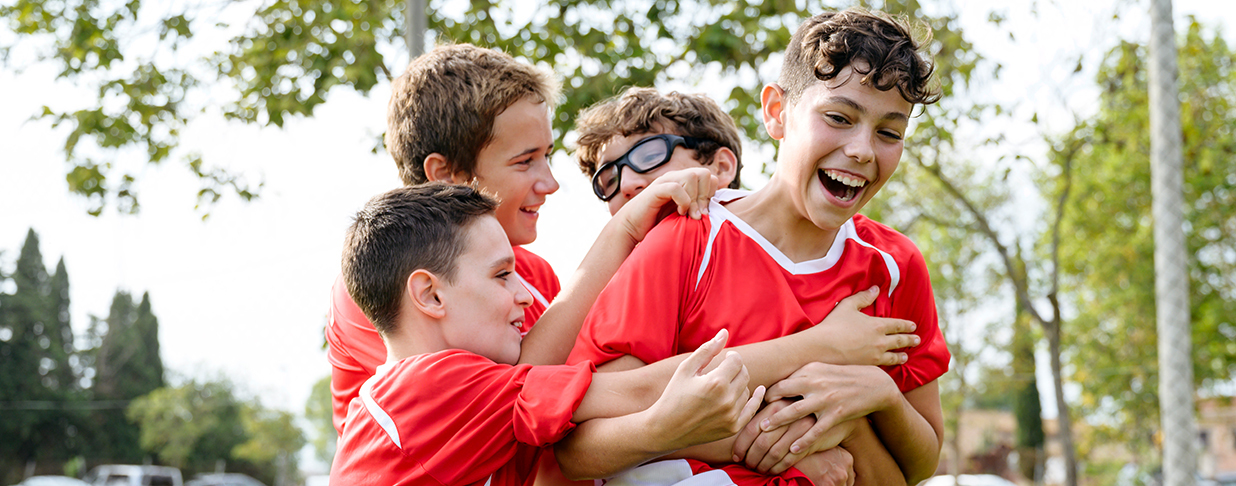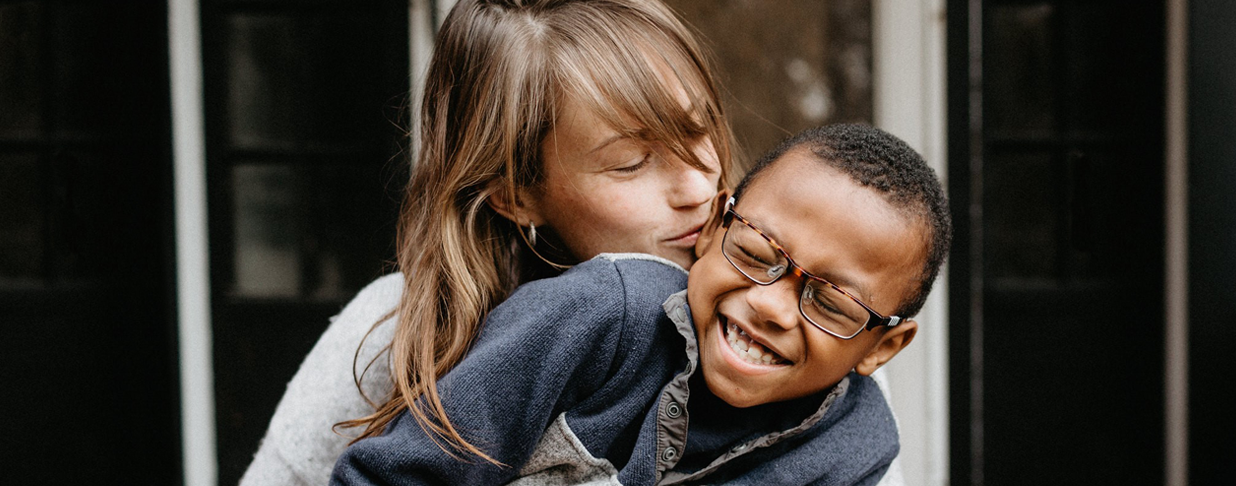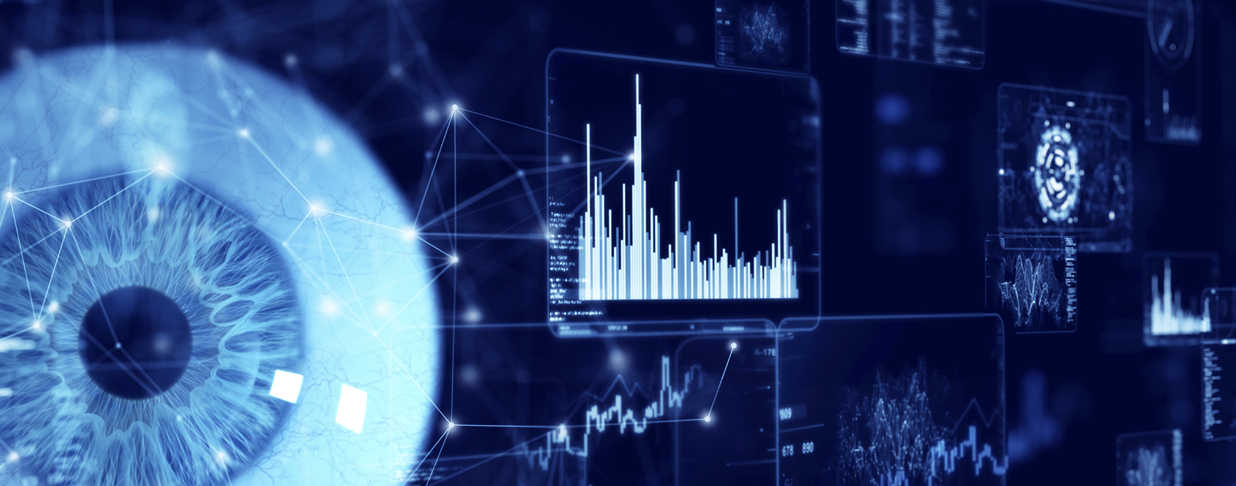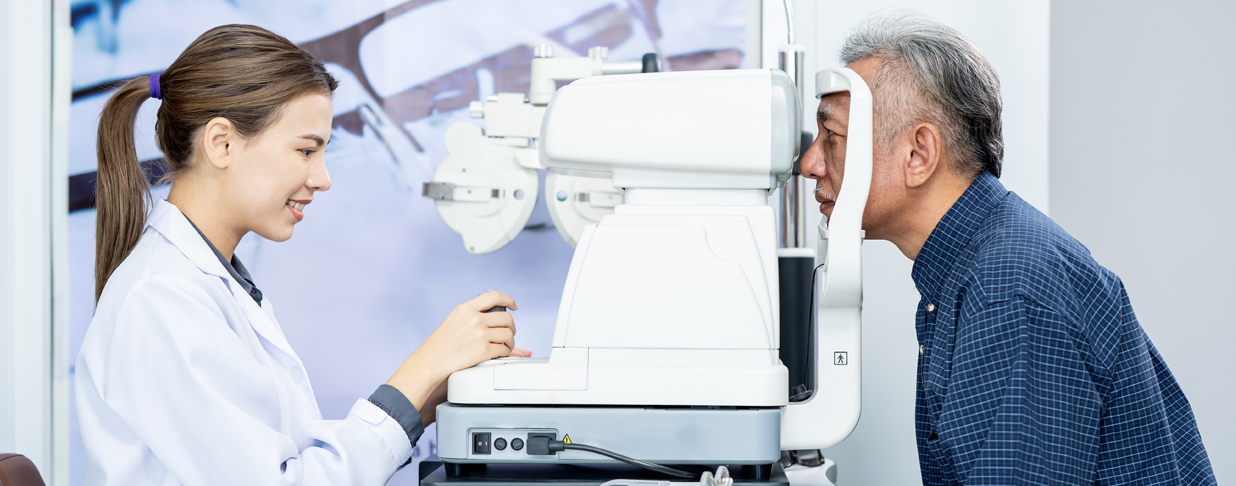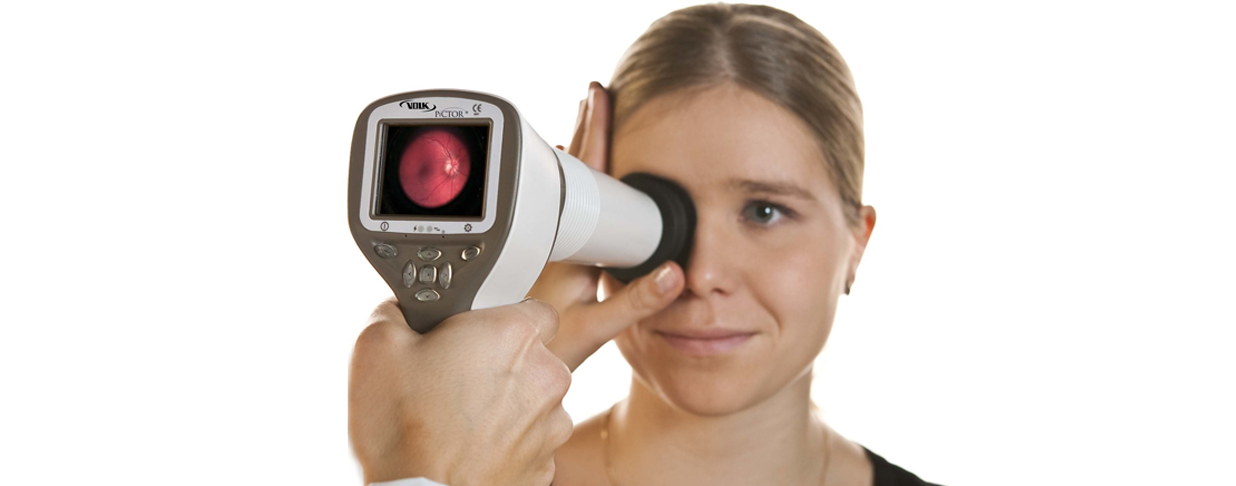Sports like football, baseball, tennis, basketball and many others can pose a safety risk to unprotected eyes. Protective sports eyewear can come in all shapes and sizes, so it’s important that employees consult their eye doctor for recommendations to minimize risk of injury.
Eye injuries by the numbers
According to the International Sports Vision Association (ISVA), sports and recreational activities and equipment are associated with approximately one-fourth of all pediatric eye injuries.1 In fact, there are tens of thousands of eye injuries due to sports and recreational activities every year.2
The statistics share even more data. The ISVA recently surveyed over 400 eye care professionals, and found that:3
- 79% (or 4 in 5) have treated patients with a sports-related eye injury in the last 5 years
- 72% stated that they most often treat corneal abrasions, followed by blunt trauma, detached retinas and penetrating eye injuries
- Over half of respondents reported basketball (55%) and baseball (53%) as the top causes of sports-related eye injuries they see, followed by racquet sports (39%), football (36%), soccer (33%), hockey (12%), water sports (9%), lacrosse (7%), and other sports (7%)
- 53% of respondents said that the most sports-related eye injuries they treat are among teens 13-19, followed by children 12 and under
Common sports-related eye injuries
Corneal abrasions4
The top sports-related eye injury, a corneal abrasion, is a scratch on or an injury to the surface of the cornea, the clear covering over the eye. Most abrasions may not be a serious injury, but they can lead to infection, so it’s important to visit an eye doctor. Symptoms can include:
- Eye pain
- The feeling that something is in the eye
- Watering eyes
- Blurred vision
- Red eyes
- Sensitivity to light (photophobia)
- Swollen eyes or eyelids
Blunt trauma to the eye5
Contact from an elbow, fist, football, racquet ball or other equipment can cause blunt trauma, or bleeding inside the eye (hyphema). It’s important to get blunt trauma treated quickly, as the high eye pressure and inflammation can lead to permanent vision loss. Symptoms can include:
- Pain
- Swelling of the eyelid
- Red eyes
- Vision loss
- Discharge from the eye
Retinal detachment6
Eye injury can cause or increase the risk of retinal detachment, a painless but serious eye condition where the retina detaches from the tissues that support it at the back of the eye. Untreated, it can lead to blindness in as little as a few days. Symptoms can include:
- Seeing flashes of light (photopsia)
- Seeing more floaters than usual
- Darkening of peripheral vision (side vision)
- Darkening of vision or seeing shadows
Protecting children’s eyes while playing sports
As part of the ISVA survey, eight in ten eye doctors (81%) agreed that all children need protective sports eyewear while playing sports, regardless of whether they wear glasses or contact lenses.3 Nearly all (97%) agreed that proper eye protection can reduce the number and severity of eye injuries,3 and the research proves it—over 90% of sports-related eye injuries can be prevented by using proper eye protection.7
Everyday eyeglasses, sunglasses and contact lenses don’t offer enough protection to guard against eye injuries,8 so it’s important to talk to an optometrist about what kind of protective sports eyewear is best for each child. This could include all-purpose safety goggles or special eyewear designed for specific sports.
Each set of protective eyewear should be designed to meet or exceed US impact protection standards. ASTM International sets the standards that eye protection must meet to help prevent eye injuries in different sports. Eye doctors can help answer questions about independently tested sports-eyewear protection that meets those standards.8
Ask an optometrist
With the risk of eye injury in extracurricular sports, going without eye protection can be dangerous. That’s why EyeMed provides 20% off non-Rx sports goggles. And members can leverage their routine EyeMed benefit for Rx sports goggles, too. Encourage your employees to talk to an eye doctor about finding the appropriate eyewear for kids who spend time on the court, field or rink.
To learn more about children’s eye safety during sports, reach out to your EyeMed representative or visit eyemed.com.
•••
1 “ECPs Need to Increase Patient Education on Importance of Protective Sports Eyewear”; Vision Monday; visionmonday.com; March 1, 2023.
2 Mott, M.; “Historic Moments in Sports Eye Protection”; The American Academy of Ophthalmology; aao.org; April 18, 2022.
3 “Sports Eye Injuries & Protective Sports Eyewear: Summary of Major Findings”; International Sports Vision Association; sportsvision.pro; February 14, 2023.
4 “Corneal Abrasion”; The Cleveland Clinic; my.clevelandclinic.org; Reviewed March 29, 2023.
5 “Eye Injury and Safety”; American Association for Pediatric Ophthalmology & Strabismus; aapos.org; Updated February 1, 2023.
6 “Retinal Detachment”; The Cleveland Clinic; my.clevelandclinic.org; Reviewed June 9, 2023.
7 “Sports and Protective Eyewear”; Canadian Association of Optometrists; opto.ca; Updated March 18, 2023.
8 “Protect. Prevent. Play.”; International Sports Vision Association; sportsvision.pro; January 01, 2022.
*Discounts are not insured benefits.
